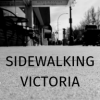The figure of 25 didn't come from the Task Force, and it doesn't represent the number of homeless. It was the number the police used to talk about the "most" troublesome. That is a ratio - not an absolute number.
There are a handful of people who the police constantly have to babysit, maybe 25 people whose day to day routines they know intimately, maybe 200 people who they know by name and see daily, or 500 people who they get called to remove from various places regularly. There are around 1500 people who just don't have homes, or have no housing stability.
As long as housing an individual costs less than the emergency services they consume as a direct result of homelessness, it makes sense to do it.
IMO they are going about it the right way - starting with the most severe cases and using economic sense instead of moral arguments to say where it stops. Most likely, there will be constant reviews to make sure that the bottom line still works, and that the savings are in fact being realized.
It is interesting, Mike, you are concerned that other people from the rest of the country will come here to take advantage of our services. Mat is concerned about the opposite - that homeless people will leave the CRD. Downtown Victoria is already the gathering place for people whose families and communities are not providing for them. Vancouver Olympics is only making that more acute. The province was at the table for the task force, and really the feds should be too imo.
Some Reading:
Here is the City's webpage regarding the Mayor's Task Force Reports:
http://www.victoria....rc_brcycl.shtml*******************************************
The Supportive Housing Definition that the City is using:
Supported housing: affordable housing where tenants have access to support services in
addition to housing. These services vary and can include: life skills training, income management,
job training, medication management, medical care, social activities, rehabilitation programs and
case management.
The situation that they are dealing with:
MAYOR’S TASK FORCE ON BREAKING THE CYCLE OF MENTAL ILLNESS, ADDICTIONS AND HOMELESSNESS
High Cost of Inaction 10/19/2007
High Cost of Inaction
� It costs taxpayers more than $50,000 per year to support each homeless resident in British
Columbia.1
� With a homeless population growth factor estimated at 30 per cent, compounded for each year of
inadequate housing stock and supports, Victoria’s homeless population could double by 2010.
� The Victoria Police Department has identified a group of 324 homeless residents—many of whom
are mentally ill and suffer from substance use problems or a dual diagnosis—who are responsible
for 23,033 police encounters over a period of 40 months, at a cost of $9.2 million to the City of
Victoria.2
� The City of Victoria has spent over $1.4 million already this year in expenditures associated with
homelessness; including clean-up costs, needle pick-up, damages to sensitive ecosystems,
security and responses to complaints.
� Without proper access to health services, homeless residents rely on emergency and acute care
health services—66 per cent of all homeless residents admitted to hospital by Vancouver Island
Health Authority have a mental health or substance use related condition.
� The Task Force found that there are over 200 organizations in the Greater Victoria area currently
engaged in addressing the needs of homeless, addicted and/or mentally ill people in our
community. Over 20 funding agencies already spend an estimated $76 million annually on
housing, mental health and addiction services. By not addressing the needs of the homeless
population in Greater Victoria, we are spending at least $62 million in other services, such as
policing, prisons, hospital services, emergency shelter, clean up, etc.
� A study conducted by the province of B.C. in 2001 showed that the cost of service use under the
status quo was 33 per cent higher than the cost of housing and supporting individuals.3
Draft report by CARMHA, Housing and Support for Adults with Severe Addictions and/or Mental Illness in British Columbia.
2 Victoria Police Department, 2007.
3 The Cost of Homelessness in BC, February 2001. A study conducted by the province of B.C.
http://www.victoria.... ... inactn.pdfMore numbers:
MAYOR’S TASK FORCE ON BREAKING THE CYCLE OF MENTAL ILLNESS, ADDICTIONS AND HOMELESSNESS
A Look at the Numbers 10/19/2007
A Look at the Numbers
How much does the status quo cost taxpayers today?
The Expert Panel has highlighted emerging evidence that the current cost estimates of the status quo
are more than $50,000 per annum, per client.1
Why did the Expert Panel develop a model for 1,000 individuals?
The Expert Panel developed the service configuration and order of magnitude costs for 1,000
individuals for ease of calculation. It can be scaled up or down depending on need. It does not mean
only 1,000 people need housing and supports.
If a homeless count noted 1,242 individuals, why does the report speak to 1,550?
A homeless count conducted in February 2007 counted 1,242 homeless individuals in the Capital
Regional District. It is recognized that this is likely an under-reporting, so the Gap Analysis Team has
assumed 1,550 people need to be housed immediately.
How many housing units are needed to address the homeless population?
The Task Force recommends a minimum of 1,550 net new units must be secured over the next five
years. This assumes efforts to slow down the number of people falling into homelessness can be put
in place.
Will 1,550 housing units adequately house all homeless residents in Victoria?
While 1,550 units will make a substantial impact, it does not account for growth in homeless residents
over the next five years. The Task Force is targeting 1,550 housing units because it is an aggressive
but achievable target given current market conditions.
Why is there an estimated homeless growth rate between 5 and 30 per cent?
The growth rates of 5-30 per cent demonstrates what will happen if we do not get moving on securing
additional housing units now. An additional 1,550 net new units will provide housing for:
· People who are homeless with severe addictions
· People who are homeless with mental illness
· People who are homeless with co-occurring disorders
It will not address the growing demand for affordable housing but it will address the highest need
population who require the most support, are the highest cost to the system and divert much needed
resources from other programs and services
.
How much will the recommend service delivery model cost?
In 120 days, the Task Force did not have the time or the necessary financial data to determine the
definitive costs to implement the Expert Panel’s model in its entirety. What we know:
· The costs to current housing, mental health and substance use services expenditures
· The cost of inaction is $50,000 per homeless resident, or over $62 million per year
· The cost to house and support a severely addicted and mentally ill population is $17,500-
$47,000 per person, per annum
1 Patterson, M., Somers, J, Shiell, A., & Frankish, J. (2007). Center for Applied Research in Mental Health and Addiction, Simon
Fraser University. Housing and supports for adults with severe addictions and/or mental illness in B.C.

















